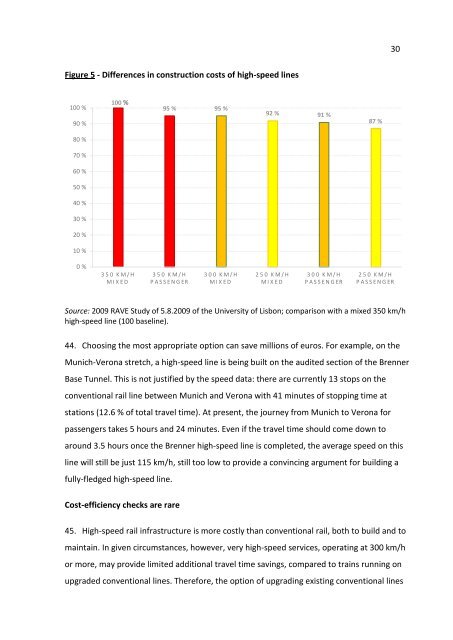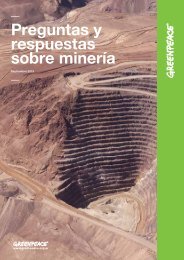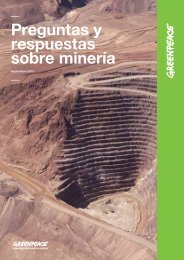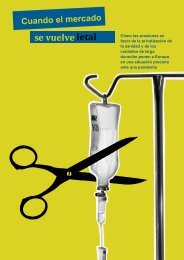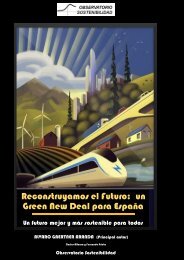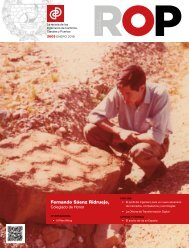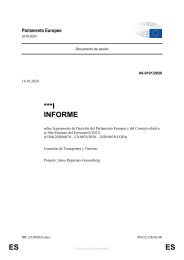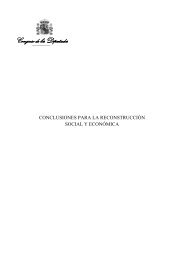La Red de Alta Velocidad Europea: Más un mosaico poco efectivo que una realidad
El presente comunicado de prensa tiene por objeto ofrecer una síntesis del contenido esencial del informe especial del Tribunal de Cuentas Europeo. El texto íntegro del informe puede consultarse en www.eca.europa.eu.
El presente comunicado de prensa tiene por objeto ofrecer una síntesis del contenido esencial del informe especial del
Tribunal de Cuentas Europeo.
El texto íntegro del informe puede consultarse en www.eca.europa.eu.
Create successful ePaper yourself
Turn your PDF publications into a flip-book with our unique Google optimized e-Paper software.
30<br />
Figure 5 - Differences in construction costs of high-speed lines<br />
100 %<br />
90 %<br />
100 %<br />
95 % 95 %<br />
92 % 91 %<br />
87 %<br />
80 %<br />
70 %<br />
60 %<br />
50 %<br />
40 %<br />
30 %<br />
20 %<br />
10 %<br />
0 %<br />
350 KM/H<br />
MIXED<br />
350 KM/H<br />
PASSENGER<br />
300 KM/H<br />
MIXED<br />
250 KM/H<br />
MIXED<br />
300 KM/H<br />
PASSENGER<br />
250 KM/H<br />
PASSENGER<br />
Source: 2009 RAVE Study of 5.8.2009 of the University of Lisbon; comparison with a mixed 350 km/h<br />
high-speed line (100 baseline).<br />
44. Choosing the most appropriate option can save millions of euros. For example, on the<br />
M<strong>un</strong>ich-Verona stretch, a high-speed line is being built on the audited section of the Brenner<br />
Base T<strong>un</strong>nel. This is not justified by the speed data: there are currently 13 stops on the<br />
conventional rail line between M<strong>un</strong>ich and Verona with 41 minutes of stopping time at<br />
stations (12.6 % of total travel time). At present, the journey from M<strong>un</strong>ich to Verona for<br />
passengers takes 5 hours and 24 minutes. Even if the travel time should come down to<br />
aro<strong>un</strong>d 3.5 hours once the Brenner high-speed line is completed, the average speed on this<br />
line will still be just 115 km/h, still too low to provi<strong>de</strong> a convincing argument for building a<br />
fully-fledged high-speed line.<br />
Cost-efficiency checks are rare<br />
45. High-speed rail infrastructure is more costly than conventional rail, both to build and to<br />
maintain. In given circumstances, however, very high-speed services, operating at 300 km/h<br />
or more, may provi<strong>de</strong> limited additional travel time savings, compared to trains r<strong>un</strong>ning on<br />
upgra<strong>de</strong>d conventional lines. Therefore, the option of upgrading existing conventional lines


